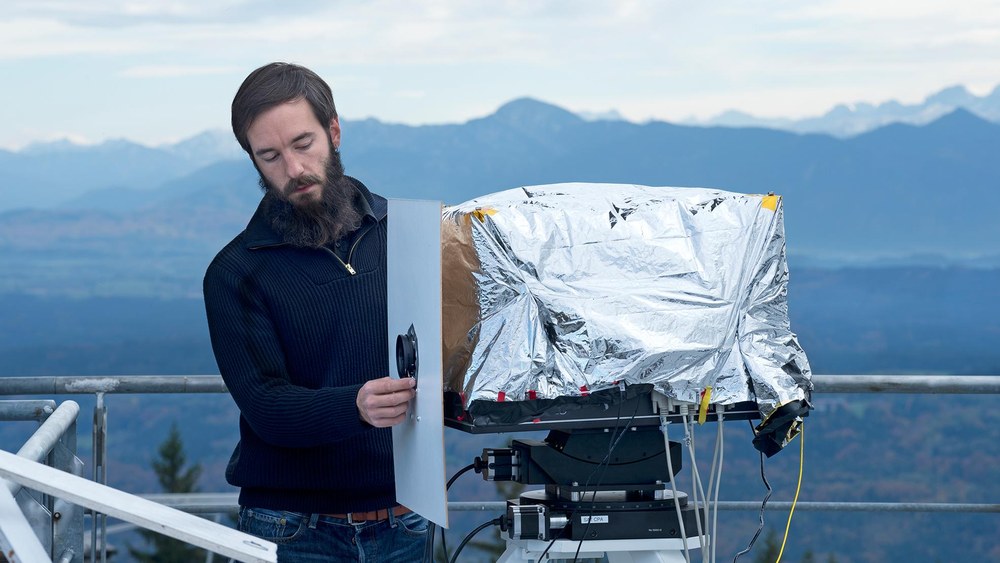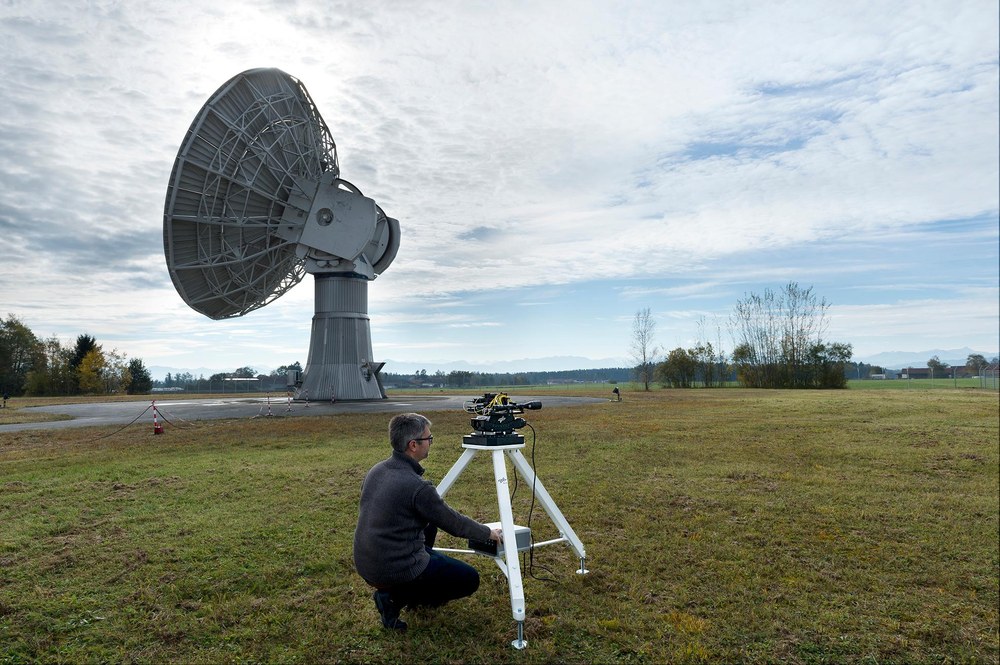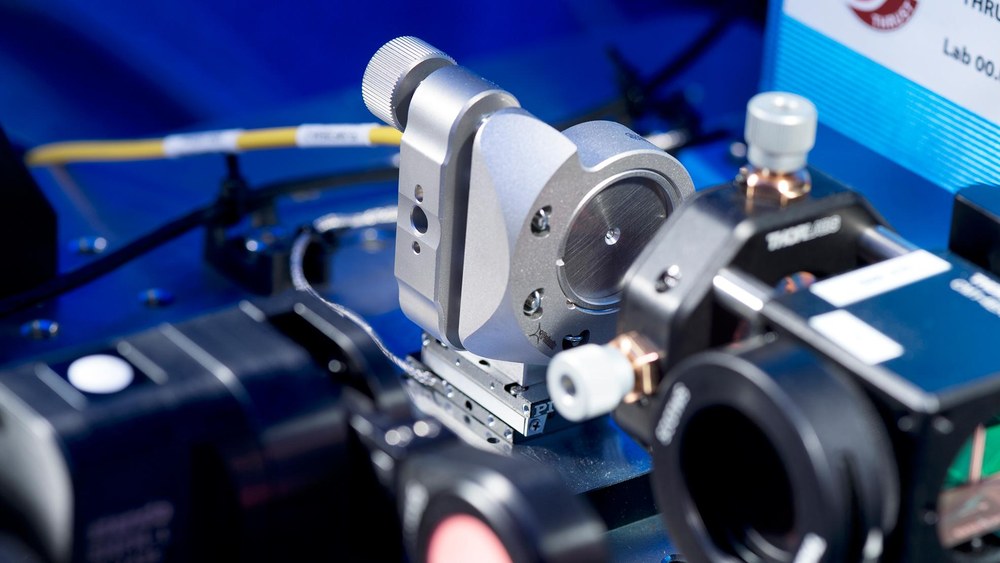World record in optical free-space data transmission


Scientists at the German Aerospace Center (DLR) have set a new record in data transmission by laser: 1.72 terabits per second over a free-space distance of 10.45 kilometers - this corresponds to a transmission of 45 DVDs per second. This could provide broadband internet to large parts of rural areas in Western Europe that are still underserved today. "We have set ourselves the goal of enabling Internet access with high data rates outside of metropolitan areas and want to show how this is possible with satellites," explains Prof. Christoph Günther, Director of the DLR Institute of Communications and Navigation.
Fiber optic connections and other terrestrial systems offer high transmission speeds, but are mainly available in densely populated regions. Outside of urban centers, broadband coverage via geostationary satellites is an option. This is where the scientists come in, developing a new type of transmission technology for next-generation communication satellites as part of the DLR project THRUST (Terabit-throughput optical satellite system technology). The idea behind THRUST is to connect the satellites to the terrestrial Internet via a laser link. The aim is to achieve data throughputs in excess of one terabit per second. Communication with users will then take place in the Ka-band, a common radio frequency for satellite communication.
1,72 terabits per second - world records over two distances
The first transmission tests with such high data rates took place at the end of October in Upper Bavaria. The DLR scientists were already able to set a record in the first step. On a route between Oberpfaffenhofen and Hochstadt, they succeeded for the first time in the world in transmitting 1.72 terabits per second (Tbit/s) over a distance of three kilometers in free space. "The high stability of the reception and the power reserves we had at three kilometers encouraged us to take the next step," reports project manager Dr. Juraj Poliak from the DLR Institute of Communications and Navigation.
The data link between the ground and the geostationary satellite is impaired by the properties of the Earth's atmosphere. Dr. Poliak and his team have therefore developed a maximum load test for their system and determined this in simulations: In the worst-case scenario, the data link to space exhibits roughly the same interference that occurs when transmitting over 10 kilometers from the ground to a mountain in the test area between Weilheim and Hohenpeißenberg. The team carried out the next tests with the laser communication system on this route - with success.
Feasible - global high-speed Internet
Having demonstrated the feasibility of the worst-case scenario, the DLR scientists are now focusing on the stability of the optical link. In the next phase, the scientists will therefore carry out measurements to better understand the effect of the atmosphere and enable stable laser communication with the satellite in the long term. "The stability of the connection is extremely important, as even a short interruption of just ten milliseconds leads to the loss of several gigabits of data," explains Dr. Ramon Mata Calvo, Head of the Optical Technologies Group at the DLR Institute of Communications and Navigation. With the new records, the scientists were able to successfully demonstrate that the vision of optical wireless data transmission in the terabit range is feasible. A fiber optic transmission system from the Fraunhofer Heinrich Hertz Institute, which is suitable for the highest data rates and operates at wavelengths of around 1550 nanoneters, was used in the experiments. This was integrated into the new free-beam transmission system developed at DLR. Employees of the Heinrich Hertz Institute successfully supported the experiments on site. The promising investigations are now being vigorously continued at DLR in Oberpfaffenhofen.

